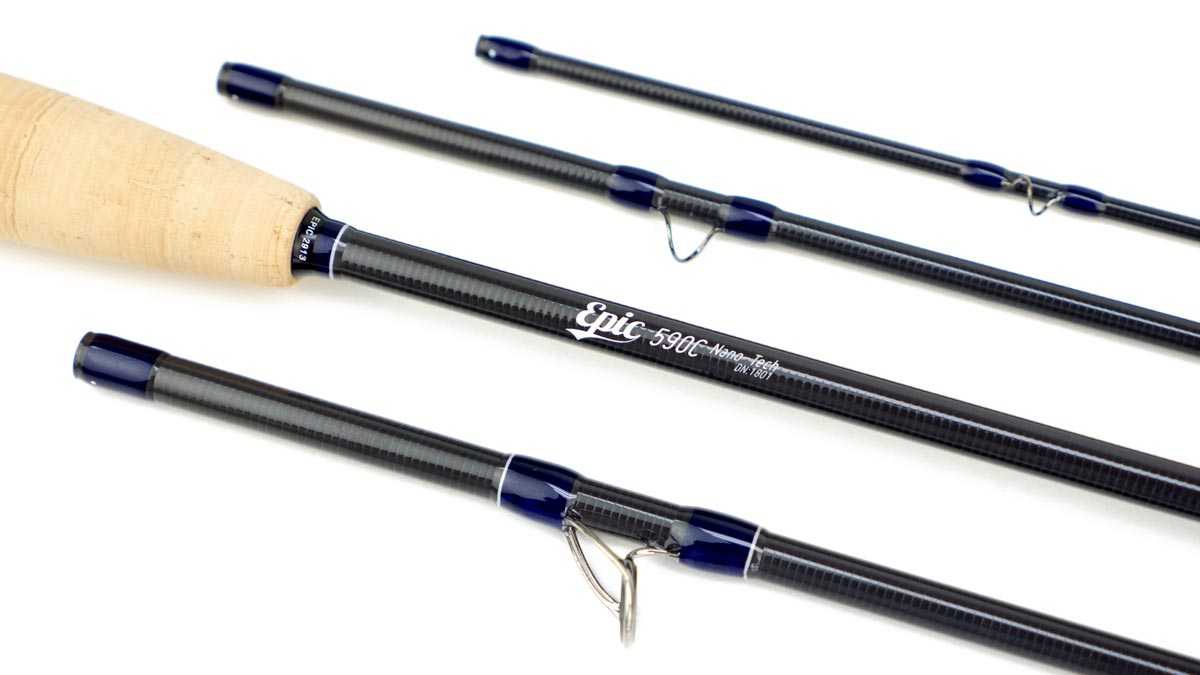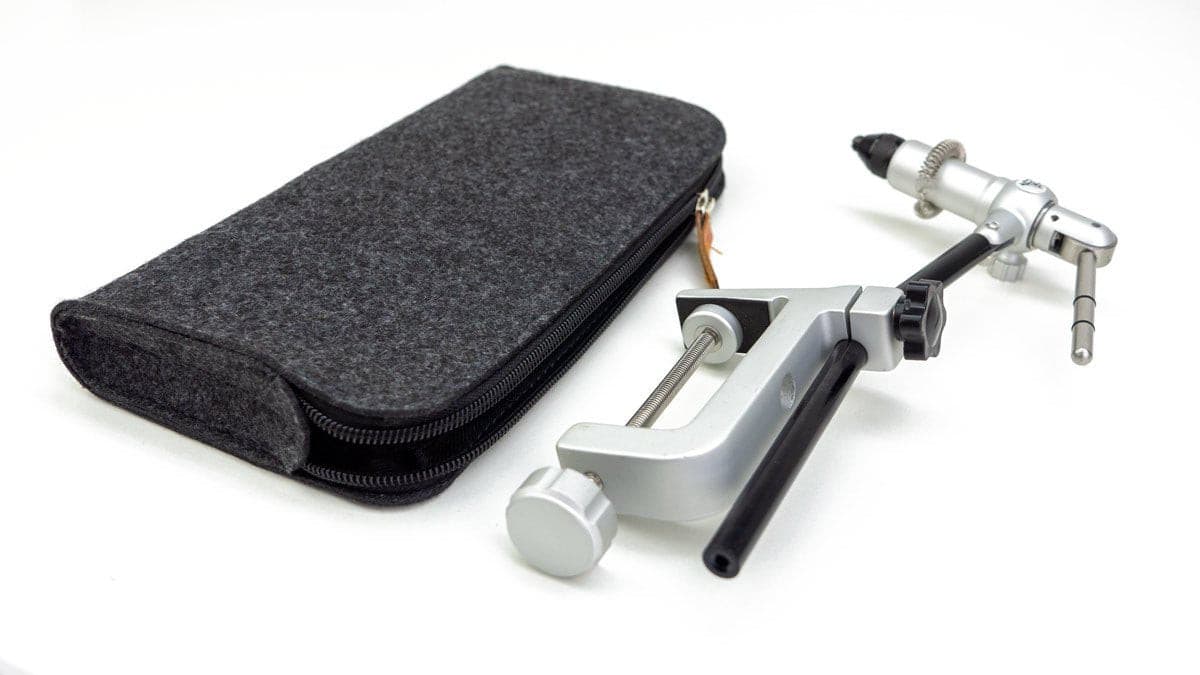Our Dirty Little Secret
This may come as a bit of a shock, but there is no industry adopted standard for rating the power of fly rods - none.
There is a well established industry standard to measure the weight of fly lines - but many manufacturers make fly lines outside the standard, seemingly just doing their own thing.
It’s all a bit of a debacle really and things seem to be getting worse - in order to understand why, here’s a bit of a background primer:
As you may know, the physical weight of fly lines are supposed to be measured against a standard - That standard was established around 1959 by the then AFTMA (American Fishing Tackle Manufacturers Association) Now named the AFFTA - I’m confused already…
As stated on the current AFFTA website - “AFFTA creates and maintains industry standards to help manufacturers comply with tolerances, and to help retailers provide customers with well matched equipment and components.” - There you have it. Certainly a worthy objective.
The AFFTA maintains 3 industry standards:
- AFFTA Reel Foot Standard - Conforming reels will fit any seat manufactured to the reel foot standard.
- Standard Line Weights - AFFTA established and maintained standards for fly line grain weights.
- Spey Line Weights - AFFTA adopted spey/double handed fly line standards.
The AFFTA fly line standard dictates that the physical weight of the first 30 feet of a fly line (excluding level tip) conforms to an industry standard for the given line rating. So for example, this would make all 5-weight fly lines weigh more or less the same for the first 30 feet. After that, do whatever you like. I've written about his before here
In Theory...
So given this standard, in theory you could buy a fly line from any manufacturer knowing that your shiny new 5 weight line would weigh the same as the other guys 5 weight line - which in theory, would mean you could be confident that this new fly line would load your trusty 5 weight fly rod in a similar manner to all the other 5 weight fly lines you had stashed away in your shed. It would also mean that you could focus on getting the taper that best suited the type of fishing you were looking to do AND not have to worry if your 5wt rod would bend in the manner you had become accustomed to or not.
But woa up there Hoss! - All this theory goes west when you learn that many manufactures make lines outside the established standard. For example Rio and Airflo make lines that are 1.5 and 2 times the standard label on the box. (And I’m sure there are others)
So the 5 wt fly line you just picked up could in fact be a 6.5 weight or even a 7.

This begs the question: Why wouldn’t they just label them to reflect what they actually are? Well I think the answer is pretty simple. If they labeled their 5 to reflect what it actually is - you wouldn’t buy it. You’re in the store looking for a 5 wt line for your 5wt rod right? not a 7 weight line.
In fact it’s increasingly difficult to find fly lines that conform to the standard - you know, lines that actually are what they say on the tin.
Why are overweight fly lines now so prevalent?
The answer is twofold:
Heavy fly lines are easier to cast at shorter distances. And I’m sorry to be the one to have to tell you this; we’ve forsaken competent fly casting skills for the get out of jail free card that is heavy fly lines. Heavy fly lines load up fly rods more and at shorter distances - they give the false impression that you are casting effectively and they cover up a multitude of fly casting sins. If you want to cast a 7 weight fly line - why not just get one - and a rod to match… and there in lies our second problem, and its a biggie.
What is a 5wt fly rod?
There is no industry adopted standard to measure the intrinsic power of a fly rod. It’s the Wild West out there buddy!
The fly rod situation is actuality more challenging for consumers than the fly line debacle. And just to take the confusion to another level I need to introduce the Common Cents System (yes cents, not sense)
The CCS is a de-facto rod rating system developed by Dr Bill Hannerman in about 2005. The CCS is imperfect, it is a static test and fly casting is very much a dynamic process - the systems is largely dependant on rod length and where the required measurements are taken. It is far from perfect and has flaws - However, standardised, it does provide a rough baseline to measure the power of fly rods.
Personally I believe the CCS is a much better system to use as an in house baseline when developing your own tapers than it is to compare tapers across many different rod manufactures. - but that’s how it was intend and is commonly used by a few custom rod builders. Few if any manufacturers use the system as far as I’m aware.
There's no such thing
Anyway - back to the question. What is a 5 wt fly rod? - And again, Im sorry to break this to you, there’s really no such thing. There are fly rods that manufacturers believe should cast a 5 wt fly line well - but there's no such thing as a 5 wt fly rod.
At best the term “5 weight’ is used to describe the weight of fly line a given fly rod designer reckons you should be casting on their rod. But with line standardisation effectively out the window, things are really starting to go pear shaped here.
You see, one companies 5wt is another's 7 weight - even by the CCS system.
As an example: Sage have a tendency to under rate their rods - and as such have established a reputation for stiff fly rods, on the other end of the scale Winston tend to be in the ballpark. So a Sage 5 may seem very stiff while a Winston may seem softer by comparison.
In short - if you want to offer a stiff, seemingly more powerful fly rod, take a seven and stick a label on it that says 5wt. Conversely there’s nothing to stop a manufacturer taking what could reasonably be classed as a 5 weight and calling it a soft 7 weight - it’s all in the eye of the manufacturer.
(There is often confusion between stiff and fast and it’s easy to erroneously lump both together. Stiffness relates to the force it takes to deflect the blank, while action indicates how and where a blank bends - often referred to as the ‘lockup point’ in reference to where the blank first exhibits bending.)
Of-course all this says nothing about recovery speed, swing-weight or mass (the overall weight of the fly rod) which all have a huge influence on the 'feel' of a fly rod - more on this another day.
With regard to the CCS There’s actually a database to see some of these measurements at https://www.rodcents.org/ccs-database/
For example the Sage One 5wt tested shows an ERN (CCS for Effective Rod Number) of 6.5 in one test and 7 in another. The CCS measures more than just ERN, but for most casters that’s the number to look for initially anyway.
So if you rocked into your local fly shop and grabbed a true to weight fly line labeled as a 5wt you’d most likely have problems bending that rod at 30 feet. It would most certainly feel stiff.
The old Sage TCR 5wt tested out at 7.2, 7.4 and 7.6 - it was a very stiff fly rod and became popular with distance casters of the day _ I have two, but was never much of a distance caster at all.
The TCR 8wt, tested out at 9.96 and 10, the later TCX 8wt at an ERN of 10
According to the database TFO tend towards stiff fly rods also.
Conversely the Winston BIIx 5wt measures up at ERN of 4.3 - so closer to a five but much softer than the Sage One by comparison.
Mine is bigger than yours
So it’s clear that one company's 7 weight is another companies 5. And, if you want to present the market with a more powerful, stiff rod, simply build what could be called a 7 and label it as a 5.
And this is almost exactly what we see in the industry. How do you think rods have become incrementally more stiffer and more powerful year upon year? (It’s important to note that many of the most recent gains in fly rod performance have largely been made with the advancement of resins btw)
Is this labelling wrong? - possibly not, it’s just the way it is in the absence of an industry standardised and universally adopted labelling system, it could even be a good thing. But horsepower is horsepower right? - wouldn't it be good to know how many you had under the bonnet?
So keep in mind - There is no universally accepted standard for labelling fly rods, only fly lines - Putting the number 5 on a fly rod is really little more than an arbitrary designation that the manufacturer saw as being desirable for a particular design. But this does in part explain why fly line companies also seem to be increasingly making ‘overweight fly lines’ - it’s the arms race of the rod and line industry.
How do we tackle this with Epic Fly Rods?
Our fly lines all adhere to the AFFTA fly line rating system and are “true to weight’ - our 5 weight fly lines actually are.
For our Epic fly rods we use the CCS system internally as a baseline for comparison between our own models to ensure we are close as we can reasonably be to what could be considered a “true to weight fly rod” - if there is indeed such a thing. The point of this for the consumer is if you have one of our fly rods and put a correctly labeled fly line across it, the rod will perform optimally and as the designer intended it. I.e you and I both have a reference. Does this mean that you shouldn't up-line or down-line our rods? or any rod for that matter - the answer is “it depends”




































